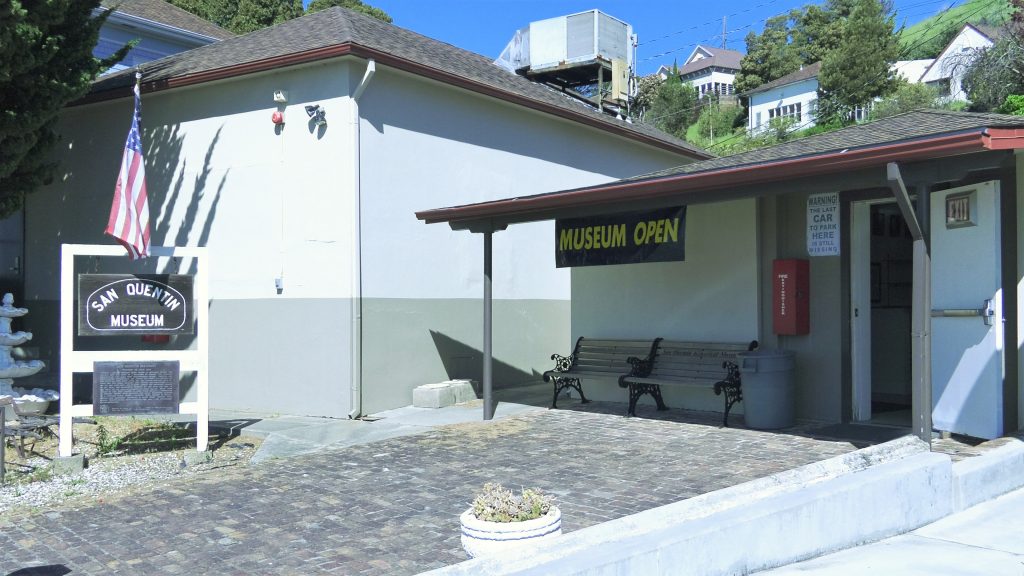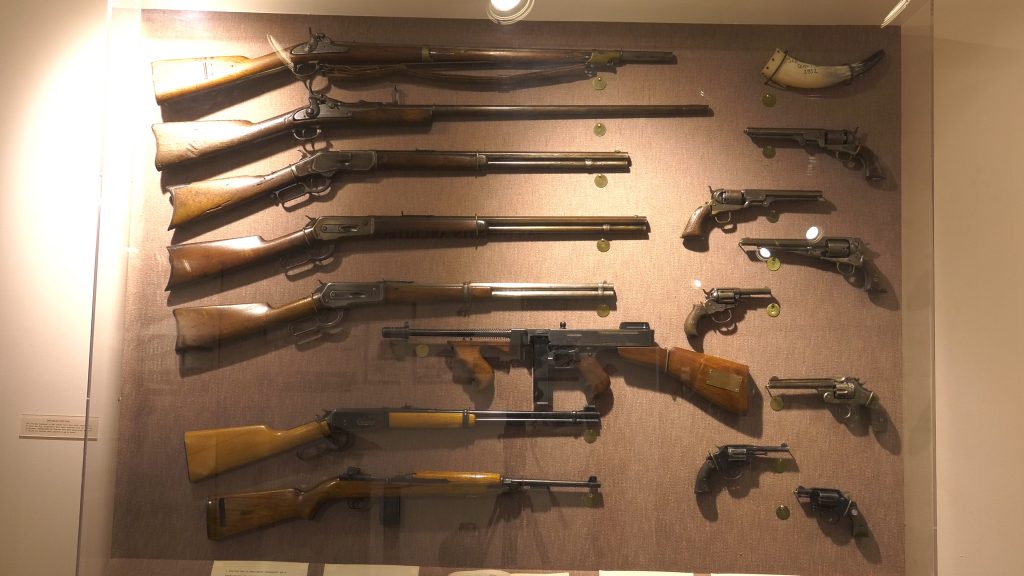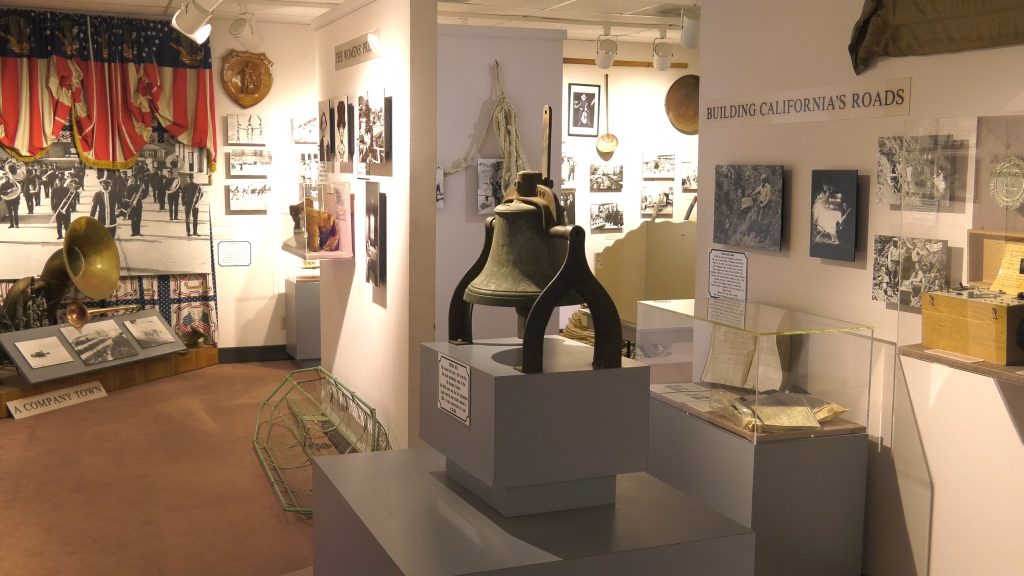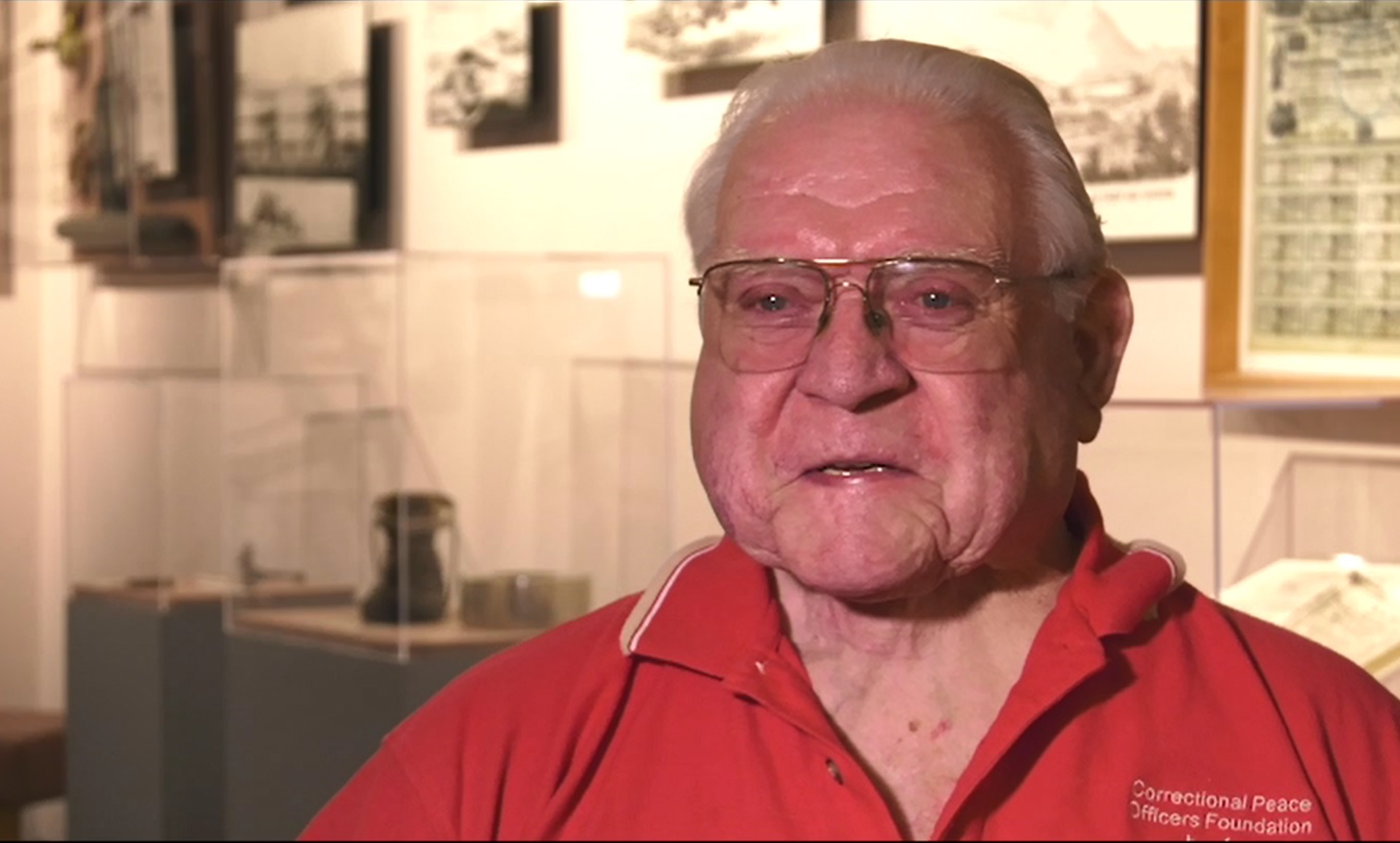San Quentin State Prison is the oldest state correctional facility in California and Richard “Dick” Nelson has made it his mission to help others remember its history. The retired associate warden began his preservation efforts while he was still employed at San Quentin.
“A group of San Quentin employees, retired staff, historians, educators and local residents joined together and organized the San Quentin Museum Association. They joined together to preserve the history and the artifacts. But, perhaps more important, to tell the true story of San Quentin,” Nelson, president of the museum association, wrote in 1991.
Inside CDCR recently caught up with Nelson, who sat down with CDCR TV Specialist Rob Stewart in the San Quentin Prison Museum. Nelson worked for CDCR for 40 years, seeing many changes over that time. He retired in 1998.
“I still honor and recognize the correctional officer who walks the cell block (and) walks into danger every day. Those young men and women at the correctional officer level are the real heroes in this business.”
Dick Nelson, retired associate warden
Prison history preserved San Quentin Museum

“It’s a wonderful experience (having worked for corrections) and I still enjoy the prison history and the museum with Jeff Craemer (a volunteer who helps run the museum),” Nelson explained. “San Quentin is so particularly interesting (due to its) history.”
The prison’s stories became something of a lifelong interest for Nelson.
“When I came to San Quentin, I did a lot of research. That history needs to be preserved. It needs to be recorded. (For the museum) we put together a vast collection of photographs, prison documents, hardware, weapons, firearms,” he said. “We went out into the community, and with the community, we raised well over a million dollars (worth of material).”
According to Nelson, the SQ Museum was the first of its kind in the state. He credits much of its success to a professional museum designer who happened to be the wife of a retired prison warden. “She designed the museum layout and she managed to get some professors to help design and build this exhibit,” he said.
History has always intrigued Nelson and he often finds visitors to be like-minded.
“It’s in the heart, to study history,” he said. “The people who visit the museum just want to know something about history. The contraband items bring the (interest from visitors). They would ask me about certain items of the contraband and there’s a story behind each one.”
State, prison history tied together

Nelson said the museum organizers wanted to show how much things have changed since the first inmates arrived on a ship.
“The message we wanted to deliver with the museum is the start of corrections in California, the beginning of the first prison in 1852 and we tried to bring (the displays) forward to about the 1990s when we put the museum together,” he said.
While he feels strong connections to various displays at the prisons, his personal interest in World War II history tends to show itself when he describes his favorite era.
“My favorite part of the museum is the dedication, patriotism and the effort that the prisoners did toward providing material during the second World War. There was a huge project here at San Quentin and everybody was involved from the warden on down to the newest arrival (inmate) that had something to do with the defense industry,” he said.
San Quentin inmates created submarine nets, gunny sacks for sandbags, air raid sirens, ship fenders, cargo nets, first aid kits, transport bunks and cargo slings. Over 7,500,000 ration books were processed and mailed by inmates during the war.
The inmates also “made scows, did the laundry for the U.S. Navy and made shoe repairs for other branches of the armed forces,” the museum book notes. Inmates were allowed to apply for parole to the armed forces, as well, to help the war effort. Inmates even rolled up their sleeves and donated 3,000 pints of blood.
Proud of his time in corrections

“It’s a love of corrections. It’s hard to explain. There are many good things that take place in a prison (but many) only hear of the bad things,” Nelson said. “There are many satisfying things (such as) when you are working with the inmates, seeing (them) change. Providing some (way) to assist them in that change (is rewarding). We as individuals and employees can’t change (other people) but we can provide insight, knowledge, and skills to assist (them to) change.”
He said today’s CDCR has evolved from his four decades spent with the department. Still, he’s confident staff will be able to keep pace.
“I was at San Quentin 30 of my 40 years and we went through several mission changes. We were always able to adapt,” he said, referring to the renewed emphasis on rehabilitation.
Nelson is quick to point out skills and education can be offered to inmates but if the offender doesn’t change his mindset, he isn’t rehabilitated.
“It’s up to the inmate to rehabilitate (their thinking and attitudes),” he said. “I have much pride in the department and my role in the department. But I still honor and recognize the correctional officer who walks the cell block (and) walks into danger every day. Those young men and women at the correctional officer level are the real heroes in this business.”
Dark day in San Quentin prison history

A machine gun hanging on the wall of the museum represents one of the darkest days at San Quentin. Aug. 21, 1971, still visibly affects Nelson when he discusses the matter.
“It was my day off. I lived in a residence up on the hill (and) was painting my kitchen. As I was going to go out in the backyard and have a cool drink, I heard a muffled gunshot. It sounded like a pistol, not a rifle crack. I knew the only pistol in the prison carried on routine basis happened to be over in the Ad Seg unit, B section of the South Block,” Nelson recalled. “Associate Warden Jim Bark came running out of his house and said, ‘George Jackson is loose in the chapel with a gun. You better get in there.'”
Nelson, a lieutenant in charge of that Ad Seg unit as well as the Adjustment Center, grabbed his uniform and ran down the hill. After grabbing a Thompson .45 caliber sub-machine gun and two clips of ammunition, he headed across the garden for the chapel.
Redirected to the Adjustment Center
“The relief lieutenant told me I was needed at the Adjustment Center,” he said. “We knew at that point there were three dead officers and one wounded (with his throat cut). I tried to determine what other officers were missing. The inmates had retreated to the backside of the Adjustment Center. They were hollering, ‘We’ve got hostages.’ I fired five rounds into a steel door and by the grace of God, that’s where the hostages were. They had two officers and were trying to (cut their throats). When the shots hit the door, it got their attention and scattered them.”
Still bound but able to move, the two officer hostages bolted from the room and headed up the tier toward Nelson and the rest of the rescue party.
“We got the wounded hostages out and (went) down the tier. We got the other inmates out first,” he said. In the end, three officers were killed, three more were wounded, and three inmates were dead.
Nelson doesn’t describe himself as a hero.
“It was something I had to do,” Nelson recalled. “(My actions were) part of the job.”
Protecting officers is something for which he hopes he will be remembered.
“I take pride in defending and protecting the line officer. I always have at every level (from) sergeant through associate warden,” Nelson said. “That’s how I’d like to be remembered, the protector of the correctional officer.”
Museum information
The museum open to the public. It is run by volunteers so hours vary but is generally open Tuesday and Thursday between noon and 2:30 p.m. For more information, call (415) 454-1460 ext. 5803.
Photos and interviews by Rob Stewart, TV Specialist
Written by Don Chaddock, Inside CDCR editor
See more stories highlighting CDCR/CCHCS staff.
Follow CDCR on YouTube, Facebook, X (formerly Twitter). Listen to the CDCR Unlocked podcast.
